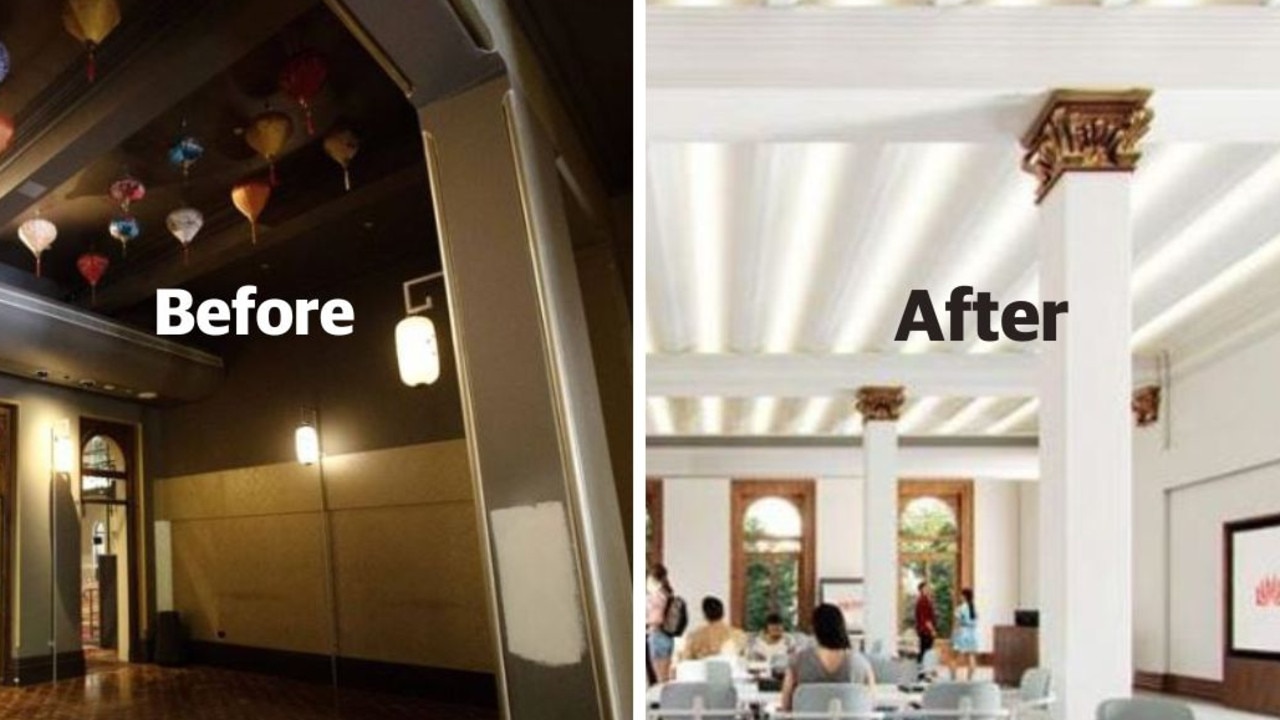Per-student school funding hit by red tape, says QTU
As damning figures show a decrease in funding per student over the past decade, school staff are questioning where the cash is going.

QLD News
Don't miss out on the headlines from QLD News. Followed categories will be added to My News.
Crucial government funds needed to support state school students are being tied up in red tape, with principals claiming they are not reaching schools.
With the Queensland Teachers’ Union releasing damning figures showing a decrease in funding per student over the past decade, school staff are questioning where the cash is going.
The figures, released by the QTU in its state election special edition journal for four state electorates — Bulimba, Moggill, Cairns and Whitsunday — showed direct-to-school funds had dropped as much as $89 per student annually since 2015.
For the Bulimba electorate, the figure had decreased from $727 per student in 2015 to $710 per student in 2023.
For the Whitsunday electorate, students received $794 in 2015, funding that had dropped to $705 as of 2023.
Australian Institute chief economist Greg Jericho said the funds were moving backwards.
“If the amount that a school or any public sector services is getting doesn’t keep increasing in line with inflation, then it’s actually going backwards. You’re, in a sense, able to do less with the money that you’ve got,” he said.
“Inflation in Brisbane, since the end of 2015 has gone up about 28 per cent so that means the amount of money that you need to basically keep even needs to go up 28 per cent.”
Mr Jericho said if a school was allocated around $700 per student in 2015, it should now be given around $900 to remain equivalent.
“The tricks you’ll often hear from governments is they’ll say that funding for services has increased, but when you look at it, it’s just they’ve increased in line with inflation, so it hasn’t gone up in real terms.”

A Department of Education spokesman could not verify the QTU’s figures, but said that according to the My School website, public funding for government schools in Queensland had increased from $12,383 to $16,709 per student from 2015-22.
Teachers’ Professional Association president Scott Stanford said while the department’s increasing figures sounded accurate from a whole-of-budget perspective, the money was not reaching schools directly.
“The bureaucracy has increased threefold over the past five years, and we are putting more money into head office and red tape has increased among teachers who are now tied up with more admin work than they used to be,” he said.
Mr Stanford said funding was being swallowed up by head office.
“We need to start putting control and accountability back into the hands of schools and principals,” he said.
Queensland Association of State School Principals president Pat Murphy said from the evidence provided, it was clear that the system was taking more than it used to.
He described the decrease as alarming.
“As the (QTU) article indicates, wages and indexation have gone up (about) 26 per cent, so we’re not just getting less money, but our money is worth significantly less than it used to be in 2015,” he said.
Mr Murphy said state primary schools would love to be able to offer an enhanced service to our students, which was being prevented now as funding has stagnated.
“Schools receive a base grant, this grant has only gone up only once in 30 years, obviously the cost of staff, resources and infrastructure have all increased massively during this time.”
“Primary schools simply cannot deliver the service we were in 2015.”

The figures, which according to the QTU were calculated from the Queensland Education Schools Appropriation Payments Application, relate to funding to meet recurrent costs for areas including Indigenous education (for certain schools), literacy and numeracy as well as the state government’s Investing for Success program, school information and communication technology and other school grants like learn to swim subsidies.
The funds published in the journal did not account for infrastructure related matters such as utilities and maintenance and were calculated by the QTU on the basis of what goes directly to students and teachers.
It comes after federal Education Minister Jason Clare called earlier this year for the money to “glow in the dark” when it came to how much federal money to state departments was being passed on to schools.
Mr Murphy said the union wanted to see the LNP pass more than 90 per cent of federally allocated money for education directly on to schools.
QTU acting president Leah Olsson said schools not being fully funded was a “national shame”.
“Queensland state schools have been conditioned to accept far less federal support than private schools for far too long.
“Every day of every school year, teachers and school leaders dip into their own pockets to help bridge the funding shortfall, knowing first-hand that students are missing out.”
A Department of Education spokesman said the “direct to school” funding quoted by the QTU did not reflect the full amount of resourcing provided to state schools.
“Resourcing may be provided through central supports, staffing or cash allocations, noting the SRS only counts some of the costs of delivering state schooling and does not include funding for capital,” the spokesman said.
“The amount of resourcing an individual school attracts is affected by local factors and conditions, such as location, student cohort, staffing needs, programs offered, enrolment numbers and the age/size of facilities.”
The spokesman said the My School website published school funding information each year from 2009 onward, including per-student amounts for each state/territory and schooling sector.
“The My School website publishes school funding information each year from 2009 onward, including per-student amounts for each state/territory and schooling sector.”

According to the department, the My School recurrent income measure represents the total state and federal resourcing for state schools.
The measure was developed for comparability between jurisdictions and includes the estimated value of all operational resourcing for education (staffing, cash and system-provided resources such as internet), except depreciation, interest, student transport, and other minor exceptions.
The My School measure also included the textbook and resource allowance, which is paid automatically to schools.
A spokeswoman for the Premier’s office said a decade of Labor had left Queensland teachers underfunded, overworked and unsupported, resulting in them leaving in droves and the safety of students and staff put at risk.
“The Crisafulli LNP government will give our education system the fresh start it needs,” the spokeswoman said.
“As part of implementing (the LNP’s Better Education) plan we will continue to engage with stakeholders to ensure our schools and teachers receive the support they need to deliver a world-class education for Queensland kids.”
Queensland Secondary Principals Association president Mark Breckenridge said the association had been advocating for fully funded public schools.
“It’s critical that state schools are fully funded so they can provide the level of service that we need to support the vast range of students that we have in our schools,” he said.
“We could be providing a greater range of mental health supports. We could be providing smaller class sizes for those students that really need that one-on-one help with that smaller group support. There’s lots of services that schools could provide if we had the additional funding.”
Mr Breckenridge said Queensland was a decentralised state, making it even harder for schools outside the southeast corner without full funding.
“Our schools that are in regional, rural and remote Queensland could really do with the funding that we’ve been asking for from both levels of government,” he said.
FUNDS PUBLISHED BY THE QTU
2015 – direct to school funds
• Bulimba electorate primary school: $727 per student
• Moggill electorate primary school: $561 per student
• Whitsunday electorate primary school: $794 per student
• Cairns electorate primary school: $1090 per student
2023 – direct to school funds
• Bulimba electorate primary school: $710 per student
• Moggill electorate primary school: $581 per student
• Whitsunday electorate primary school: $705 per student
• Cairns electorate primary school: $1055 per student
What “full SRS looks like” according to the QTU
• Bulimba electorate primary school: $998 per student
• Moggill electorate primary school: $820 per student
• Whitsunday electorate primary school: $992 per student
• Cairns electorate primary school: $1484 per student
More Coverage
Originally published as Per-student school funding hit by red tape, says QTU





